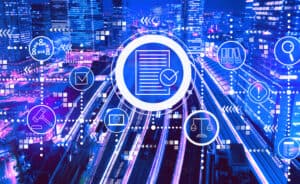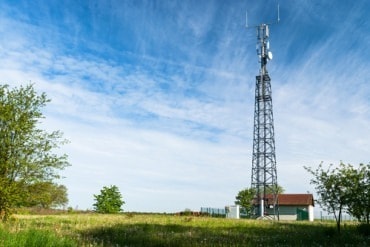
IoT’s unlimited potential and 5G’s fast speeds and low latency provide the critical infrastructure for the connected smart cities of the future.
Networks boosted with 5G, connected across Internet of Things-enabled devices and sensors, are transforming the livability and safety of many of our largest cities. In turn, smart cities are the fuel behind the fast-growing 5G IoT market.
The global 5G IoT market is expected to grow at a compounded annual growth rate of almost 48% annually from 2023 to 2030 and is expected to reach close to $18 billion by 2030, according to predictions by Meticulous Research. A major driver of this market, the report’s authors state, is the smart cities movement. “The new 5G infrastructure vastly expands the opportunity for cities to utilize smart devices, sensors, and data to improve operations and functions. 5G IoT devices bring a lot of features for enhancing the development of smart cities, including intelligent transportation, smart energy management system, security systems, smart healthcare systems, and public utilities, among others.”
Related: Edge Computing and 5G Smart Resources
IoT connects everything from cars to street light sensors and “allows businesses, cities, and individuals to monitor, manage, and control these connected devices while gathering real-time data, analytics, and insights,” the Meticulous authors add. Smart buildings can leverage wireless technology, IoT devices, building automation, and data analytics to evaluate and monitor processes while operating more cost-effectively and efficiently.”
Smart cities require two layers of technologies to deliver results. “The first layer is a technology base that includes a critical mass of smartphones and sensors connected by high-speed communication networks,” writes Poornima Apte in an analysis published by the American Society of Mechanical Engineers. “A second layer of specific applications translates the constant stream of raw data into alerts, insights, and action. Apps that show traffic volume in real time, for instance, allow drivers and pedestrians to better plan travel routes and adapt at a moment’s notice.” Smart city technology may also include services such as real-time crime mapping, telemedicine by bringing health practitioners into patients’ homes, and digital tracking of waste receptacles.
See also: Smart Cities: Regional Collaboration Synergizes Benefits
Leaders in the smart cities movement, as identified in the ASME report, include the following:
- Copenhagen: The Danish Outdoor Lighting Lab (DOLL) is piloting lights for city streets, which include sensors “and are used for data transmission exercises such as collecting outdoor temperature or pedestrian traffic information. The lab hopes to use this infrastructure for other IoT purposes, such as identifying when a bulb needs to be changed, a more efficient system than periodic maintenance checks.”
- Seoul: “The city announced that its city-wide IoT network will be finished by 2023. IoT sensors will track parking, traffic, streetlights, and environmental data. The information will be transmitted to and from 25 district offices in the city for analysis of immediate bottlenecks and long-term trends for service improvements.”
- Amsterdam: The city monitors air quality via several sensors, the results of which are available to the public as an interactive map. In 2019, Google partnered with the City of Amsterdam to monitor air quality throughout the city using Street View cars in a project called Project Air View. Several sensor systems monitor traffic to ensure compliance and traffic safety. The system monitors 3 million cars every day. Finally, camera data from across the city lets government officials make decisions about rerouting traffic to ease congestion.”
- Singapore: “The city-state uses a data-based pricing platform for car drivers and motorists called Electronic Road Pricing (ERP). This system charges drivers more to travel on roads that are congested, contributing to a safe and efficient driving experience powered by data collection. The next generation of ERP may include distance-based pricing for vehicles.”
- New York City: The city “installed Automated Meter Reading devices on large and small businesses, homes, and other water-using installations to track water use and bill residents more accurately. The rooftop-mounted receivers communicate with the Department of Environmental Protection up to four times a day. This enables the city to track water consumption for its population. Citizens can also track their water consumption by reading the meter.”
- London: “The city maintains air quality networks using sensors. The Imperial College London maintains one set. The other set is part of a Mayor-funded citizen science network that uses over 100 IoT sensors to measure air quality throughout the city. Air pollution in the city has decreased from 2017 to 2020, in part due to stricter laws on polluting vehicles.”
Smart cities are now starting to employ 5G IoT technologies “to collect real-time data to process, communicate, and share data at a higher speed with low latency,” the Meticulous Research team reports. “The 5G networks provide flexible, higher speed, low latency, and high-reliability results. In addition, IoT devices communicate and exchange real-time data for monitoring, managing, and controlling devices for implementing the technologies to advance smart city projects. 5G and IoT are key components for transforming how cities connect and operate. With IoT’s unlimited potential and 5G’s incredibly fast speeds and low latency, these technologies unleash critical infrastructure for the future of connected communities.”








